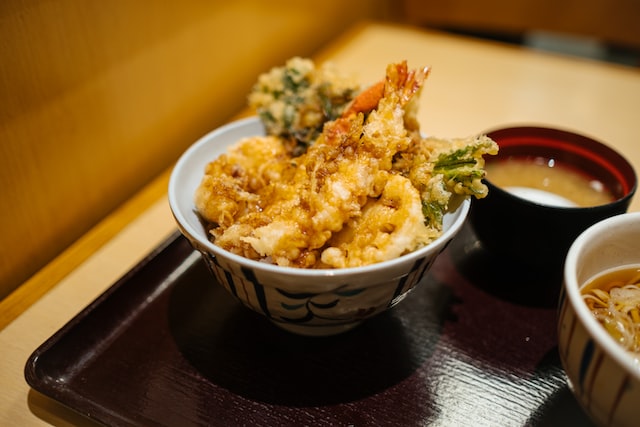
Agemono, the Japanese art of deep-frying, is a culinary treasure that embodies the essence of Japanese cuisine. Every dish that is cooked in Agemono reflects the philosophy of simplicity, yet elegance, which forms the foundation of Japanese culture. It’s probably one of the most relatable Japanese cooking techniques for Americans.
One of the most popular dishes in Agemono is tempura, which is made by dipping pieces of seafood or vegetables into a light batter and then deep-frying them until they are crispy and golden brown. The batter used in tempura is a unique blend of wheat flour, rice flour, baking soda, and ice-cold water, which creates a light and delicate coating that allows the flavors of the food to shine through.
Another famous dish in Agemono is karaage, which is Japanese-style fried chicken. The chicken is first marinated in a mixture of soy sauce, sake, and ginger, and then coated in potato starch before being deep-fried to perfection. The result is a crispy and juicy fried chicken that is bursting with flavor.
Agemono also includes a wide range of other deep-fried foods such as tonkatsu (breaded and deep-fried pork cutlets), ebi fry (deep-fried shrimp), and kakiage (a mixed vegetable tempura). Each dish is unique in its preparation and presentation, yet all share the common thread of being cooked in hot oil until crispy and delicious.
The art of Agemono requires skill, patience, and a deep understanding of the ingredients and techniques involved. It is a testament to the Japanese culture that they have perfected this culinary art form and have shared it with the world. So the next time you indulge in a plate of crispy tempura or juicy karaage, take a moment to appreciate the beauty and elegance of Agemono.
Types of Agemono
Agemono, the art of deep-frying in Japanese cuisine, encompasses a wide array of mouthwatering dishes. Each type of Agemono showcases the skill and precision required to achieve crispy perfection. Here, we explore some popular types:
Tempura
Tempura is undoubtedly the most well-known and beloved dish in the world of Agemono. It embodies the delicate and crispy nature of Japanese deep-frying, showcasing a variety of seafood and vegetables. Here are some popular types of tempura:
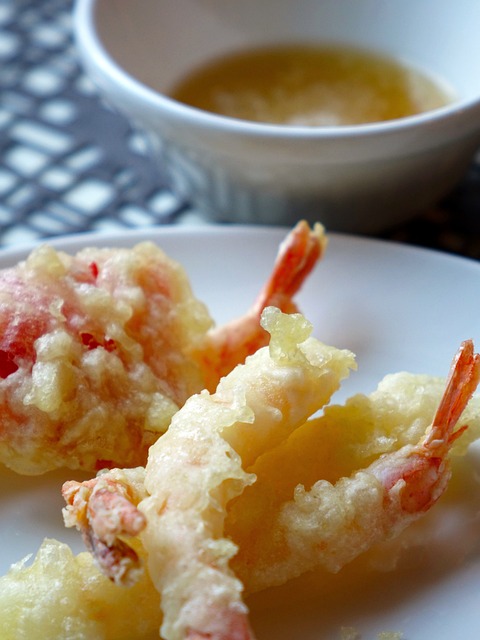
Ebi (Shrimp) Tempura:
Ingredients: Fresh, plump shrimp are traditionally used for this type of tempura. The shrimp are cleaned, deveined, and then lightly seasoned with salt before being dipped in the batter.
Preparation: The shrimp are dipped in the tempura batter, carefully coated to ensure an even layer, and then deep-fried until golden brown and crispy.
Serving Suggestions: Ebi tempura is often served as an appetizer or as part of a larger meal. It can be enjoyed on its own or accompanied by a dipping sauce, such as tentsuyu (a soy-based dipping sauce), and garnished with grated daikon radish.
Yasai (Vegetable) Tempura:
Ingredients: A wide variety of vegetables can be used for yasai tempura, including bell peppers, sweet potatoes, zucchini, and eggplant. The vegetables are sliced, lightly blanched, and then thoroughly dried before being coated in the batter.
Preparation: The vegetables are dipped in the tempura batter, ensuring full coverage, and then submerged in hot oil until crisp and golden.
Serving Suggestions: Yasai tempura is often served as a side dish or part of a bento box. It pairs well with a dipping sauce or can be enjoyed as-is, showcasing the natural flavors and textures of the vegetables.
Kisu (Japanese Whiting) Tempura:
Ingredients: Kisu, a type of small white fish, is a popular choice for tempura. The fish is cleaned, lightly salted, and then coated with batter.
Preparation: The fish is dipped in the batter and quickly deep-fried until the batter becomes crispy and the fish is cooked through.
Serving Suggestions: Kisu tempura is often served as part of a larger meal or on its own as a snack. It pairs well with a squeeze of lemon or a sprinkle of salt to enhance the delicate flavor of the fish.
Kabocha (Japanese Pumpkin) Tempura:
Ingredients: Kabocha, a sweet and nutty variety of pumpkin, is transformed into a delicious tempura. The pumpkin is peeled, seeded, and cut into thin slices before being coated in the batter.
Preparation: The pumpkin slices are dipped in the batter and deep-fried until they become golden brown and develop a crispy exterior.
Serving Suggestions: Kabocha tempura is a popular autumn dish and can be enjoyed as a side dish or as part of a tempura set menu. It pairs well with a sprinkle of salt or a dusting of powdered green tea for a unique twist.
Karaage
Karaage (唐揚げ) – This is a Japanese cooking technique where small pieces of meat or fish are marinated in a mixture of soy sauce, sake, ginger, garlic, and other seasonings, and then coated in a mixture of flour and starch before being deep-fried. Often you might see it on the menu as just “karaage”, which will often mean the chicken version.

Tori Karaage: Tender chicken pieces marinated in a soy-based concoction, liberally seasoned with ginger and garlic, enveloped in a tantalizingly crisp coating.
Ebi Karaage: Plump and juicy prawns bathed in the same flavorful marinade, creating a tantalizing deep-fried treat.
Ika Karaage: Rows of succulent squid, marinated and lovingly coated in a special mixture, unveiling a delightful contrast of tender meat and crispy exterior.
Takoage
Takoage (たこ揚げ) – This is a type of Japanese fried food made with octopus pieces coated in a light batter and deep-fried until crispy.
Satsuma-age
Satsuma-age (薩摩揚げ) – This is a type of fishcake made from ground fish and other ingredients such as vegetables and seasonings, which is then deep-fried. These delectable fishcakes feature a crisp exterior and a tender center.
Ebi-age
Ebiage (エビ揚げ) – This is a type of Japanese fried food that consists of deep-fried shrimp coated in a light batter.
Toriage
Toriage (鶏揚げ) – This is a Japanese term for deep-fried chicken, which is typically breaded and seasoned with salt and pepper.
Other Popular Agemono Dishes:
Tonkatsu
Thick slices of tender, breaded pork cutlets, deep-fried until golden brown. Serve with tangy tonkatsu sauce for a delightful combination of flavors.
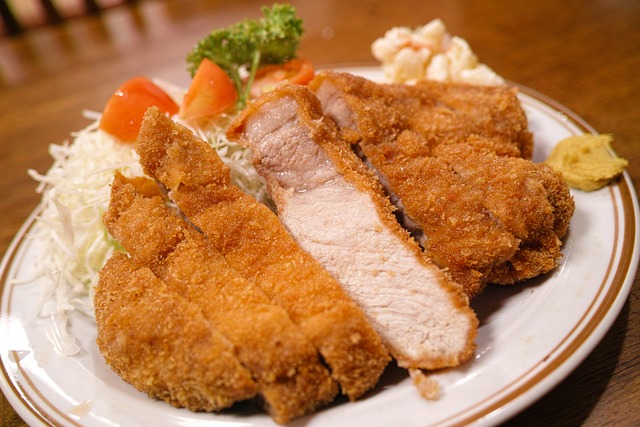
Kaki Fry
Plump and succulent oysters, coated in a light batter and fried to a golden crisp. Enjoy with a squeeze of lemon for a refreshing touch.
Chicken Nanban
Bite-sized chicken pieces marinated in a tangy, sweet-sour marinade, coated in a fluffy batter, and fried to perfection. Served with a tartar sauce for a tantalizing fusion of flavors.
Ebi Furai
Juicy shrimp, given a crispy coating, and deep-fried to create a delectable shrimp snack. Serve with a side of creamy sauce or tartar sauce for dipping.
Menchi Katsu
A flavorful mixture of ground meat, typically beef or pork, seasoned with herbs and spices, formed into patties, coated in breadcrumbs, and deep-fried until golden. Serve with a tangy Worcestershire sauce for a savory treat.
Mochi Ice Cream
Soft and chewy mochi wrapped around a ball of ice cream, then lightly coated in a sweet batter and deep-fried for a warm, crispy exterior contrasted with the cold and creamy center.
Serving Suggestions and Accompaniments:
To heighten your Agemono experience, consider the following serving suggestions and accompaniments:
Dipping Sauces:
Tentsuyu: A traditional soy-based dipping sauce, delicately sweetened with mirin, infused with dashi broth, and enhanced with grated daikon radish.
Green Tea Salt: A delicate blend of powdered green tea and flaky sea salt, a unique twist that imparts an earthy and aromatic element to the dishes.
Complementary Delicacies:
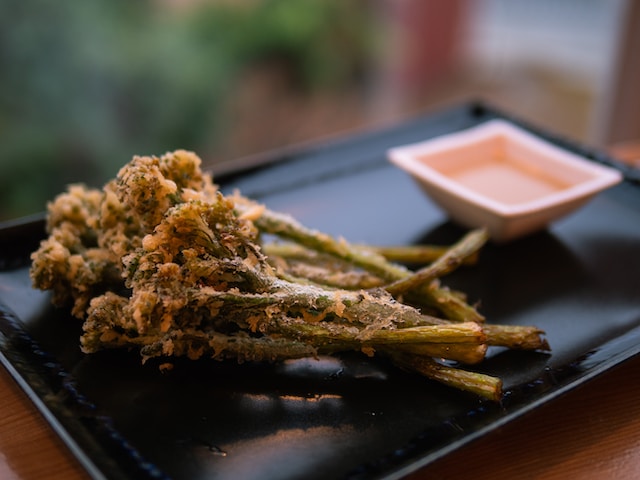
Steamed Japanese Rice: A bed of fluffy, perfectly cooked rice serves as a canvas to absorb the flavors of Agemono dishes.
Miso Soup: A comforting bowl of broth infused with umami-rich miso, accompanied by scallions and tofu, providing a balanced contrast to the fried delicacies.
Refreshing Pickles:
Takuan: Crisp, pickled daikon radish flaunting a tangy and slightly sweet taste.
Asazuke: Quick-pickled vegetables, varying in flavors and textures, offering a refreshing and crunchy bite that harmonizes with the richness of Agemono.
Elegant Garnishes:
Scallions: Finely chopped scallions lend a touch of freshness and vibrant color to the dishes.
Grated Daikon Radish: A sprinkling of grated daikon radish adds a subtle, refreshing kick to complement the fried elements.
Citrus Zest: Zest from citrus fruits like yuzu or lemon, grants a tangy, aromatic dimension, elevating the overall experience.
Techniques and Tips for Perfect Agemono
Preparing Agemono dishes requires a combination of skill, precision, and attention to detail. Here are some techniques and tips to help you achieve the perfect Agemono:
Temperature Control:
- Maintaining the right temperature of the oil is crucial for achieving crispy and evenly cooked Agemono. Use a deep-fry thermometer to monitor the oil temperature and adjust the heat as needed.
- For tempura, the oil should be around 350°F (175°C). If the temperature is too low, the food will absorb more oil and become greasy. If it’s too high, the outside may brown too quickly while the inside remains undercooked.
Cold Ingredients:
- Make sure the ingredients you are deep-frying are cold before dipping them into the batter. This helps to create a crispy texture and prevents the batter from absorbing too much oil.
- For tempura, you can even chill the batter and the bowl you’ll be using to make it. This will help maintain a cold temperature and create a lighter coating.
Light Batter:
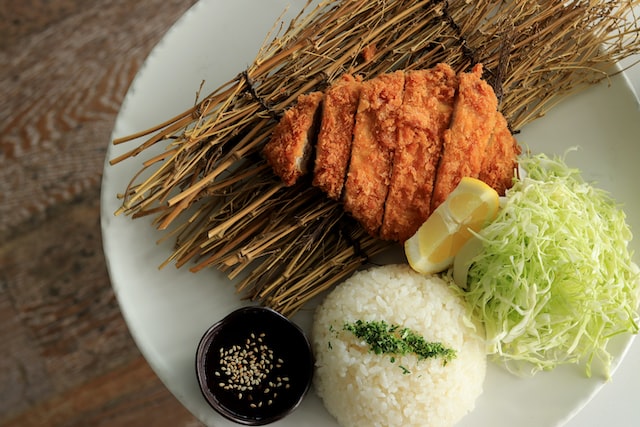
- The secret to a light and delicate coating is to avoid over-mixing the batter. It’s okay if there are a few lumps remaining. Over-mixing can develop gluten and result in a denser coating.
- For tempura batter, use a combination of wheat flour and rice flour in equal parts. The rice flour adds crispiness and lightness to the batter.
Proper Dipping and Draining:
- When dipping ingredients into the batter, use a gentle hand and avoid pressing too hard. This helps to maintain the lightness and avoid a heavy coating.
- After dipping, allow any excess batter to drain off before adding the ingredient to the hot oil. This prevents the batter from becoming too thick and uneven during frying.
Fry in Small Batches:
- To ensure even cooking and maintain the temperature of the oil, fry the ingredients in small batches. Overcrowding the pan can lower the oil temperature and result in soggy, greasy Agemono.
Season Immediately:
- As soon as the Agemono is removed from the oil, season it immediately with salt or other desired seasonings. This allows the seasonings to adhere to the hot surface and enhance the flavors.
Remember, Agemono is best enjoyed immediately after frying, so gather your loved ones, appreciate the artistry and craftsmanship involved, and savor each crispy bite. The world of Agemono invites you to experience the exquisite harmony of flavors and textures that define Japanese cuisine.

